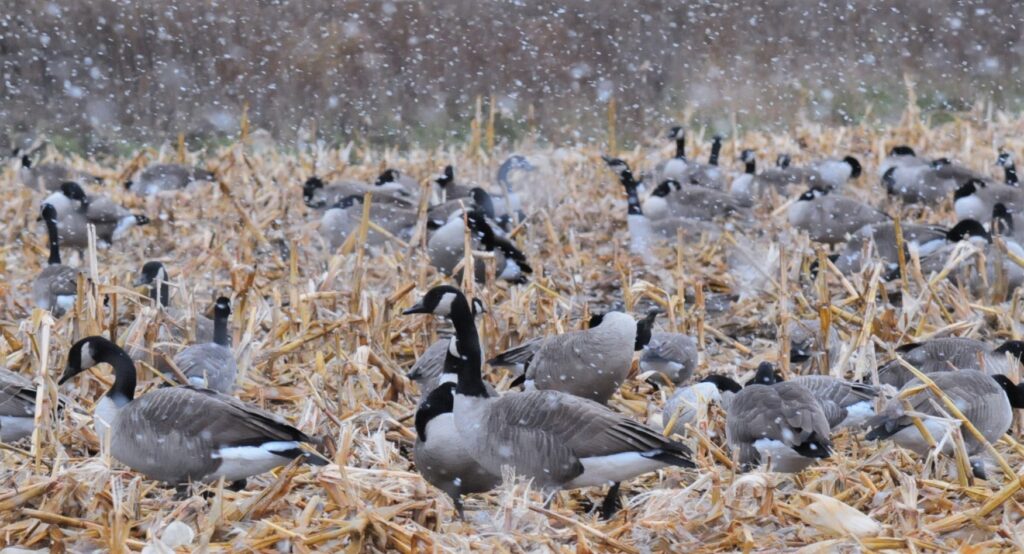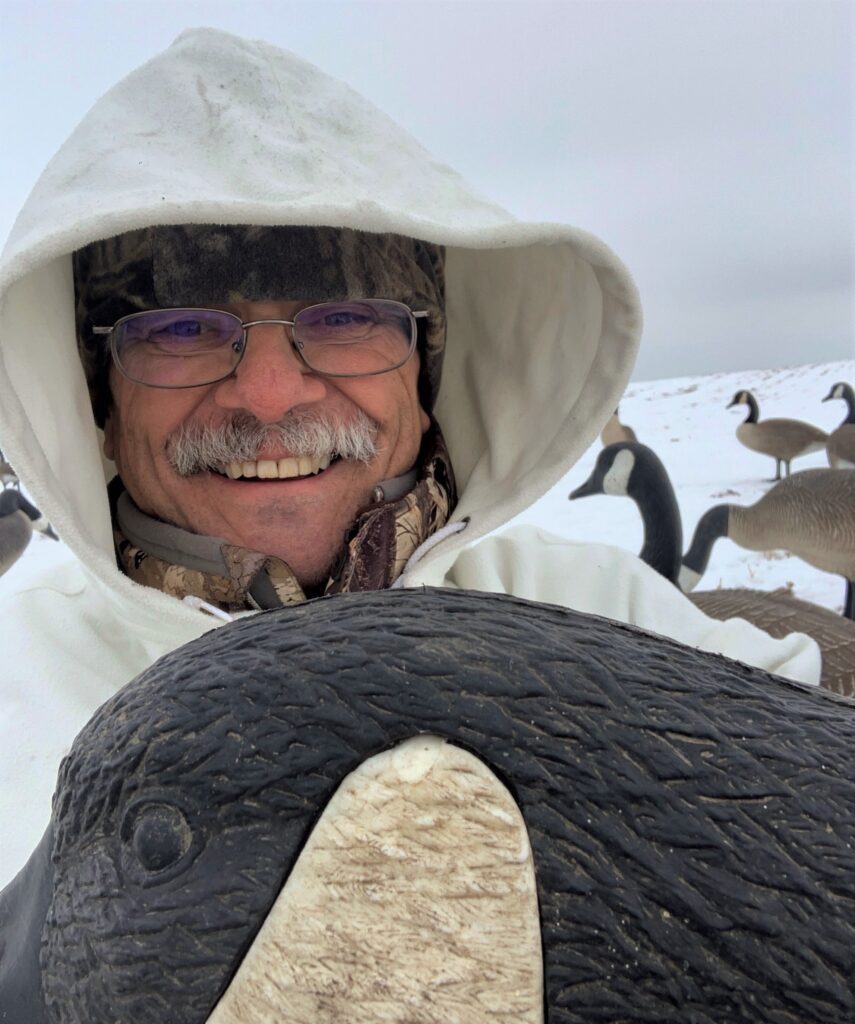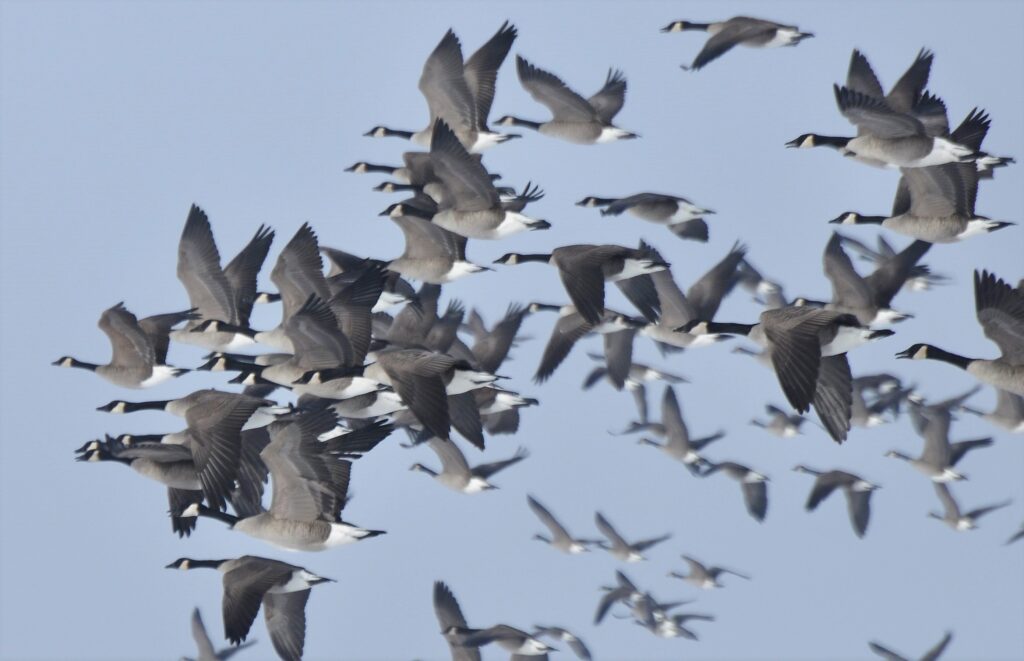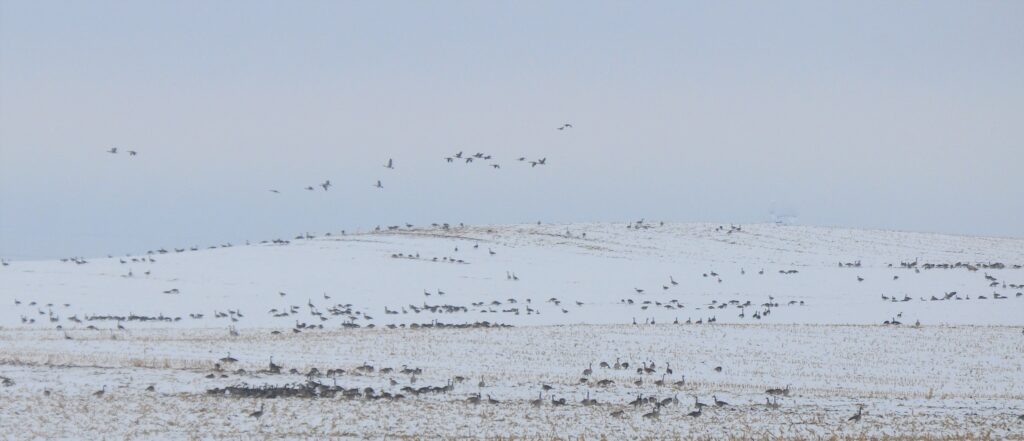Photography courtesy of Lowell Washburn, all rights reserved.
The wild turkey is an exceptionally wary bird. Spooked of its own shadow, a seasoned gobbler is suspicious of everything he sees and hears. Set on perpetual hair trigger, he’s ready to run or fly at the drop of a hat.
By contrast, the Canada goose is a thinker. The honker is a smart bird – perhaps our smartest. Providing hopeful hunters with ample lessons in humility are the Canada’s stock in trade. For those who hunt geese, the annual seasons progress in a more or less predictable manner. The pickins’ are never easier than when the hunts first begin in late September. But the honeymoon doesn’t last. By late October, geese have become largely uncooperative and have begun leading hunters on a merry chase. By the time November arrives, flocks will have become nearly impossible to lure into a spread of decoys and most hunters are now frustrated to the point of packing it in.
The good news is that there is one equalizing factor that can turn things around and level the playing field for late season hunters. That single factor is snow. Cover local corn or bean fields with four or five inches of fresh snow and the game changes. Even though they’re hog fat and probably wouldn’t need to eat for a week, honkers seem to think they are on the verge of starvation as soon as the ground turns white.

This doesn’t mean, of course, that geese automatically become teal tame or that shooting them will suddenly be like taking candy from a baby. It isn’t. And although plenty of late season challenges remain, at least now you have a better than even chance for success.
One of my favorite winter tactics is go to the middle of a field where I place 50 or more full-bodied decoys. I realize that it’s a modest spread by most late season standards but is a comfortable number for one guy to quickly set up. Geese can spot decoys for a long way against a snowy backdrop. Even though passing geese are used to feeding with hundreds of their kind, my piddling little spread is usually enough to bring birds in for a look. Once the decoys are in place, I don white pants and parka and simply lay in the middle of the decoys. As long as I’m completely decked out in white, no further camouflage is required.

Crisp, cold and clean, I love winter goose hunting. Doesn’t matter if the day is windy or calm. Doesn’t matter if it’s clear, snowing, or fogbound — there’s just something about late season goose hunts that make them a cut above anything else – at least in my opinion. Today offered an exhilarating example. Hunting about three miles from Clear Lake, I gained permission to set up in a field located along the path geese had been traveling to feed. It was early afternoon, and I was still putting the finishing touches on the decoys when the first flock appeared. Clear Lake has been harboring anywhere from two thousand to three thousand geese. Most of the fowl are headquartered on a large air hole located in the middle of the lake from which they conduct daily excursions to local grain fields. At times, goose numbers are dramatically bolstered when joined by field feeding flocks arriving from Mason City. When that happens things can get really noisy and, when things go right, really exciting. The downside is that, even with snow cover, unusually large mega-flocks typically remain difficult or impossible to fool.
In this case, the approaching flock was huge. Attempting to count the birds by groups of ten, I estimated that the oncoming squadron contained more than 120 honkers. That’s why I was amazed when while still hundreds of yards out, each and every bird simultaneously set their wings and began to lower toward the decoys. It was a breath-taking sight. Continuing to lose altitude, the flock loomed larger by the second. Despite a brisk wind, the sound of their overlapping honking was becoming louder with each beat of my quickening pulse. The birds were now under 50 yards and looking good. A few seconds more and they would be at the decoys.

And then, and in less time than it takes to read this sentence, the birds suddenly decided to shy off at the outside edge of the spread. The painful reality was that I had flunked the final exam; my rig had failed to pass inspection. The geese had smelled a rat and my decoys had been rejected. Like I said, late season goose hunting is not without challenge. By the time we get to this stage of the game, those huge flocks are sure to contain a number of old birds that have done and seen it all. It is these old flyway veterans – some literally in their teens – that warn and save the lives of younger, more inexperienced birds. Snubbed or not, you cannot help but respect their intelligence.
The next flock appeared a few minutes later. Containing around 80 birds, the geese conducted a carbon copy performance of the previous flock – offering plenty in the way of anticipation and noise, but no goose dinner. Fortunately, goose hunting can spin on a dime and the tables were about to turn. Spotting a small flock approaching from the west, I could immediately sense that these birds were different. Advancing toward the decoys on a beeline course, the birds never strayed, never wavered, but came dead on. Arriving at the edge of the decoys, the birds dropped their black webbed landing gear and prepared for touchdown. If I hadn’t sat up, the birds would have certainly landed.

It’s hard to miss something as large as a Canada goose at close range. Shouldering the shotgun, I collected a bird with each barrel. As the survivors winged a hasty departure, I couldn’t help but wonder if I had just created a new crop of PhD graduates. Crisp, cold and clean, I love winter goose hunting.

 Susan Judkins Josten
Susan Judkins Josten Rudi Roeslein
Rudi Roeslein Elyssa McFarland
Elyssa McFarland Mark Langgin
Mark Langgin Adam Janke
Adam Janke Joe Henry
Joe Henry Sue Wilkinson
Sue Wilkinson Tom Cope
Tom Cope Kristin Ashenbrenner
Kristin Ashenbrenner Joe Wilkinson
Joe Wilkinson Dr. Tammy Mildenstein
Dr. Tammy Mildenstein Sean McMahon
Sean McMahon